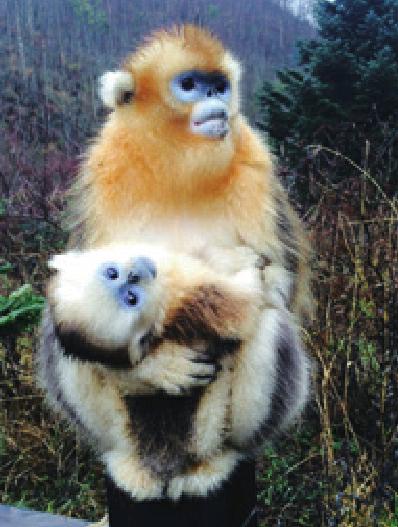A Golden Era
2015-12-14ByLiuTing
By+Liu+Ting
Scientists have identified new insect and plant species in central Chinas Hubei Province as part of a recently completed research project.
Ten new insect species were discovered, along with 52 plant species found for the first time in the Shennongjia National Nature Reserve, said Wang Daxing, chief of the reserves administration authority, at a press conference on November 5. The research project, conducted from 2011 to 2015, produced a comprehensive report on the regions geography, flora and fauna, micro biosystem and human activities.
Based on the surveys results, the reserve has set up for the first time a digital database of the natural resources in Shennongjia.“The database provides timely and comprehensive information on the distribution and amount of rare and endangered species. It will help us better formulate protection plans and conduct more targeted management of local resources,” Wang said.
Shennongjia has long been known as the home of “wild man,”a big-foot ape-man. In the past 100 years, more than 400 people have claimed they have seen the creature, but no solid evidence of wild mans existence has been found.
The area has more than 3,700 types of plants and 1,060 animal species, including golden monkeys, south China tigers, leopards and other rare wild animals.
Five species of golden snub-nosed monkeys are known on the planet, and the monkeys living in Shennongjia belong to the species mostly found in southwest Chinas Sichuan Province. Of the golden monkeys in China, those in Shennongjia are the smallest in number and have the least genetic diversity, making them higher in value for research and protection.
Established on April 15, 2005, the Dalongtan Research Base is the main habitat for golden monkeys in Shennongjia. More than 80 golden monkeys from seven families live at the base.
Usually female golden monkeys become pregnant between July and September and deliver between March and May. After the baby monkeys are born, their mothers hold them in their arms until they grow up. Golden monkeys grow into adult at three and die in their 20s,” Tian Sigen, who has worked at the base for 10 years, told Beijing Review. “Sometimes the monkeys jump into our arms to show their intimacy.”
“This year, 15 baby monkeys were born in the Dalongtan base, the most since it was set up 10 years ago, and all the baby monkeys survived,” said Yang Jingyuan, head of the Research Institute of the Shennongjia reserve. The average survival rate of monkey cubs is only about 6 percent, he said.
In the 1980s, there were only 501 golden monkeys in Shennongjia, according to Yang. But thanks to natural forest protection and reforesting cultivated land, the number of the endangered animal has increased. The last census in 2005 showed there were 1,282 golden monkeys in Shennongjia. Yang said the latest population figures will be available next year after a survey is completed.
“Golden monkeys live 1,600-3,000 meters above sea level, and the quality of the environment will immediately affect the survival of the species. Therefore the living condition of golden monkeys is also an important barometer of the environmental soundness in Shennongjia,” Wang told Beijing Review.
The Shennongjia reserve is going to use more advanced technology to conduct further research on the golden monkeys, he said, adding that management of the habitat will be strengthened to prevent disruption of human activities. The Dalongtan base will also cooperate with 49 universities to enhance the protection and research of the monkeyshabitats.
Yang said that after residents were relocated out of the core area of the Shennongjia reserve, human impact on the local ecosystem has been greatly reduced and the forest cover has increased. With a better environment, the golden monkeys habitat is expanding, creating favorable conditions to increase their population, he predicted.
